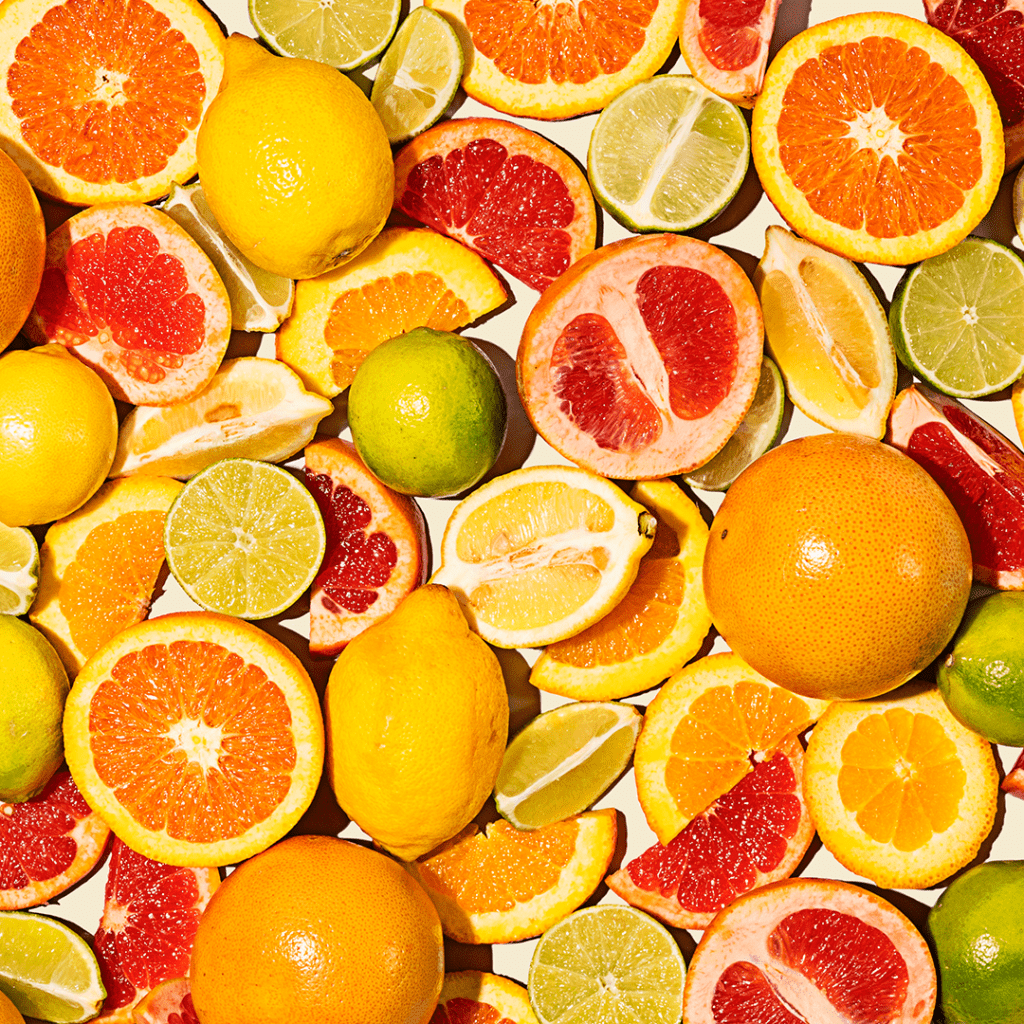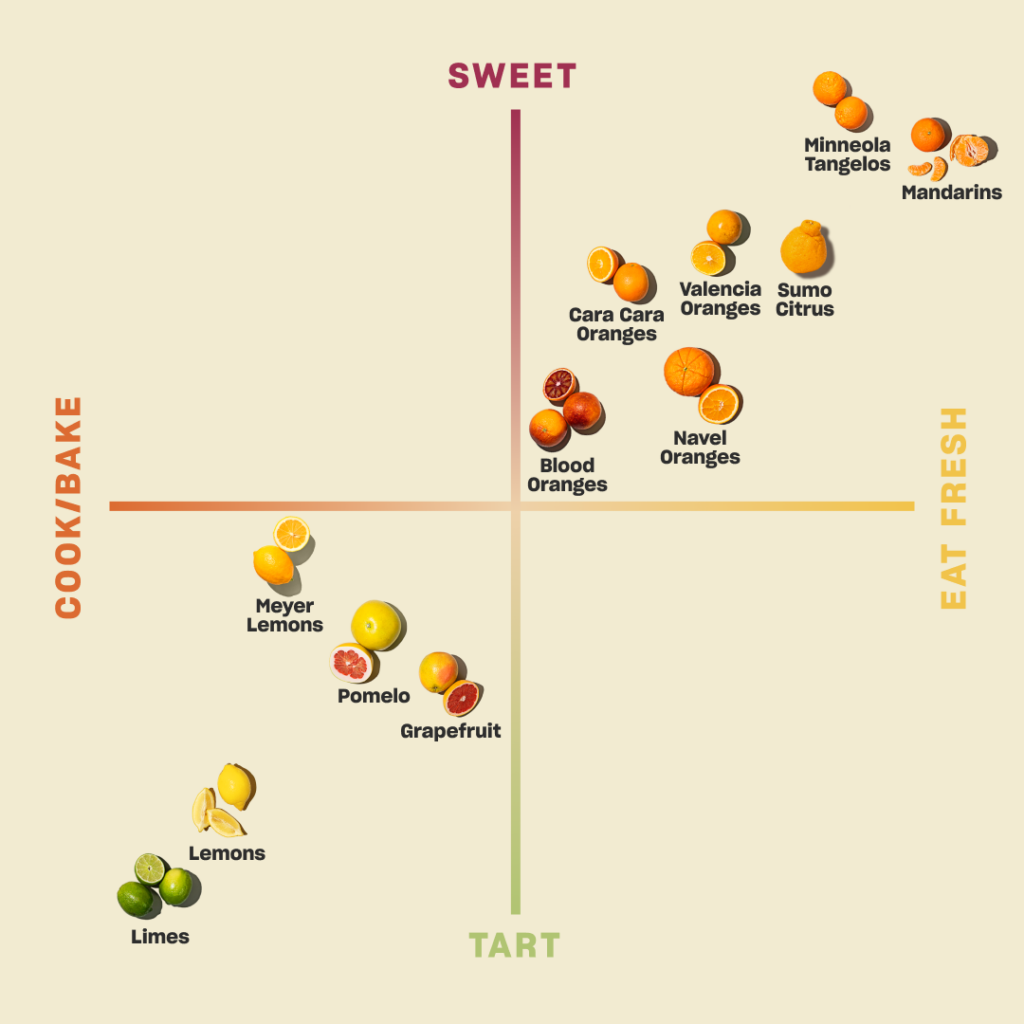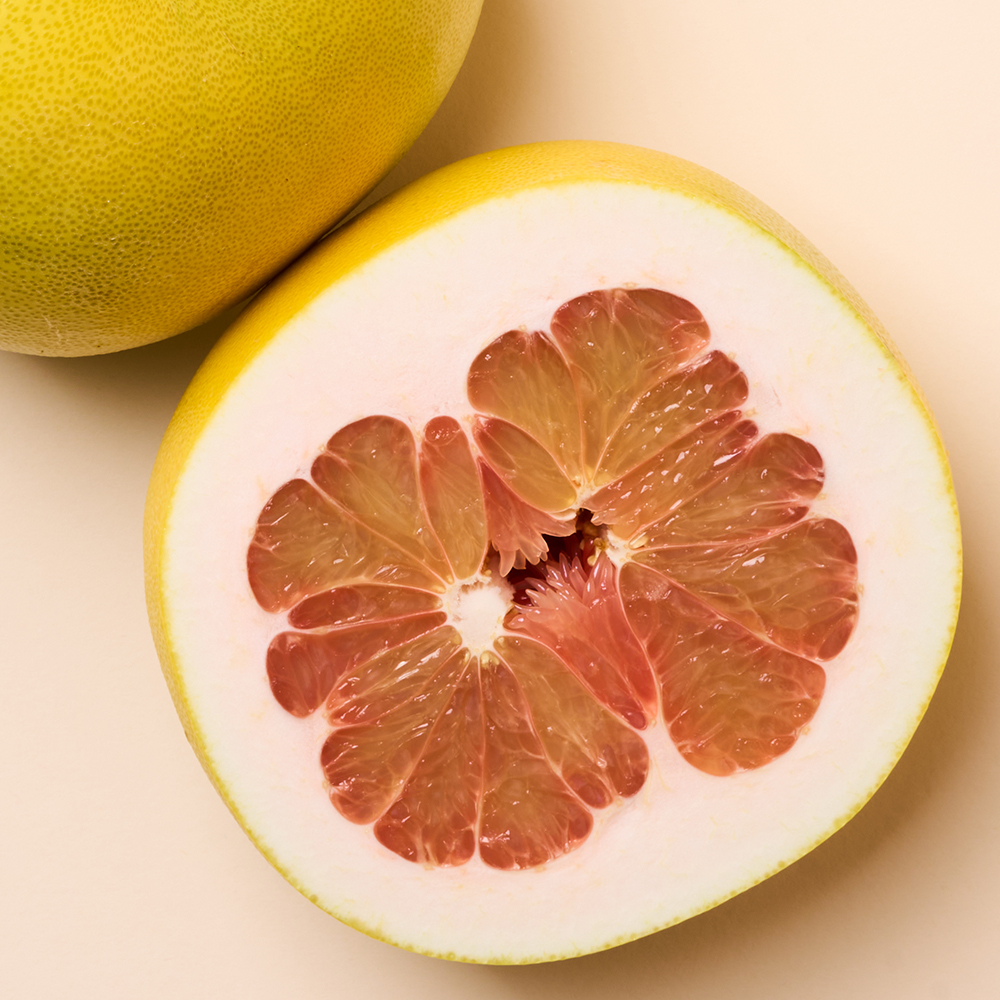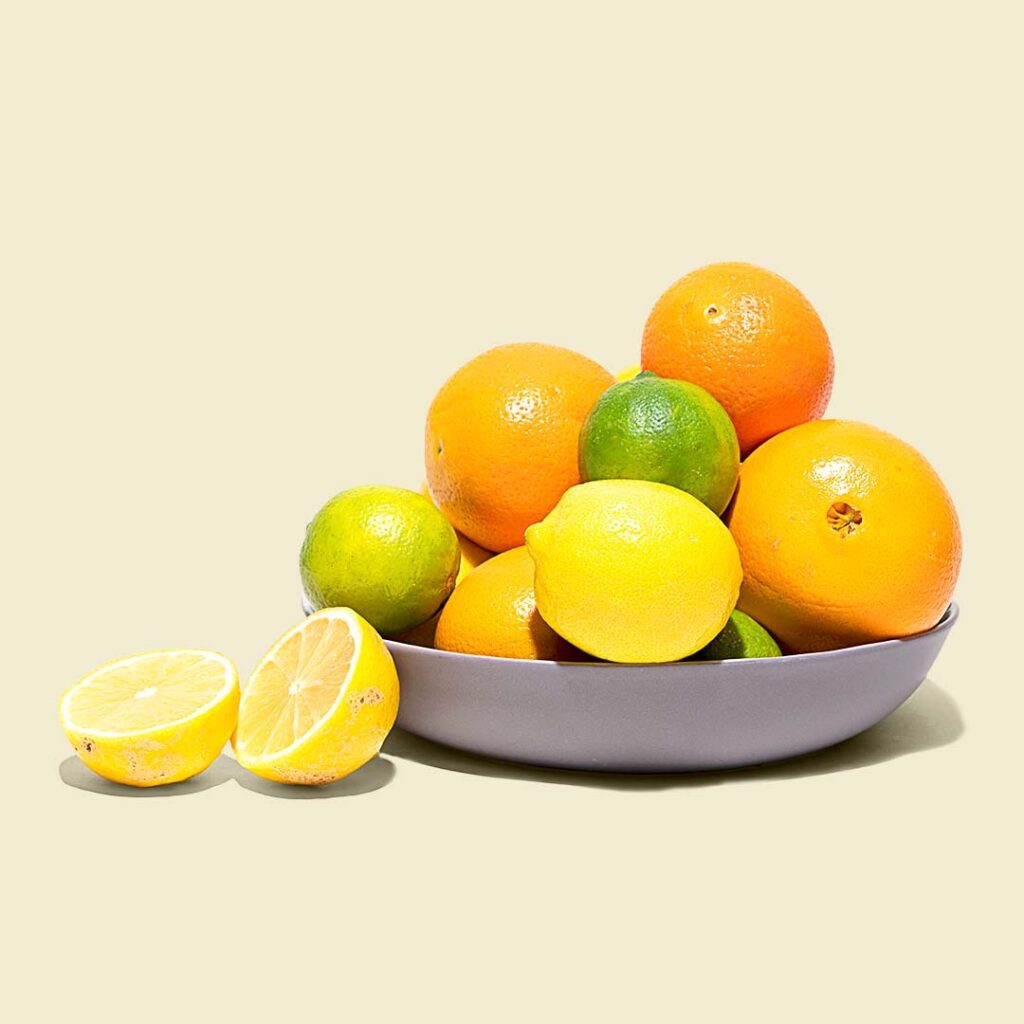
From sweet and snackable to tart and tangy, citrus fruits are among the most dynamic ingredients in your kitchen. Their flavor profiles range widely, and how you use them—whether raw, cooked, zested, or juiced—can completely change the experience.

This guide breaks down how to eat and how to cook with different citrus varieties, along with a citrus flavor chart to help you choose the right fruit for the job.
Getting Different Flavors from Citrus
Citrus fruits contain essential oils in the peel, potent acidity in the juice, and fragrant, sweet-tart notes in the flesh. Understanding the flavorful parts of citrus and how to use them is key:
- Zest adds intense aromatic oils to baked goods, marinades, and dressings.
- Juice contributes acidity and brightness to both savory and sweet dishes.
- Flesh offers sweetness, juiciness, and texture.
Peel can be candied or infused for bitter-sweet complexity.
Visual Citrus Flavor Chart
Want a quick look at how different citrus fruits stack up in terms of sweetness, tartness, and best use? This flavor matrix breaks it down—from limes and lemons for cooking to mandarins and Sumo Citrus for snacking.

Citrus Flavor Chart: Sweet to Tart, Fresh to Cooked
This matrix helps you visualize each fruit’s flavor profile and culinary strength—from ideal for snacking to best when cooked or baked.
Best Eaten Fresh (Sweet & Juicy)

- Sumo Citrus – Candy-like sweetness and easy to peel. Eat straight out of the skin.
- Mandarin Oranges – Bite-sized, sweet, and seedless—perfect for salads or snacking.
- Minneola Tangelos – Juicy and tangy-sweet with great peelability.
Balanced (Sweet & Versatile)


- Cara Cara Oranges – Rosy flesh and low acidity. Use in smoothies, salsas, or desserts.
- Blood Oranges – Berry-like flavor and stunning color for both raw and cooked applications.
- Navel Oranges – A true all-rounder. Use in salads, juices, or vinaigrettes.
Best for Cooking & Baking (Tart & Bold)



- Meyer Lemons – Slightly sweet with floral notes. Ideal for lemon bars and curds.
- Lemons – High acidity and bold flavor. Great for marinades, sauces, and baking.
- Limes – Tart and aromatic. Excellent in savory dishes, cocktails, and pies.
- Grapefruit – Tart with a bitter edge. Brûlée, segment into salads, or caramelize.
Tart & Pulpy (Advanced Use)
- Pomelo – Mild sweetness and thick pulp. Best in glazes, jams, or cooked dishes.
Benefits of Eating Citrus
Citrus fruits are high in vitamin C, antioxidants, and water content—making them a great choice for hydration, immune support, and flavor enhancement. Regularly including citrus in your diet can support collagen production, improve iron absorption, and provide a low-calorie, nutrient-rich option for snacks or meals.
How to Eat & How to Cook with Citrus
- Eat Fresh: Peel and segment citrus fruits for salads, snacks, or smoothie bowls.
- Cook & Bake: Use juice or zest in sauces, marinades, risottos, cakes, or tarts.
- Candy: Turn peels into candied citrus for garnish or snacking.
- Infuse: Add peels to syrups, teas, or DIY cleaners.
Whether you’re choosing a citrus fruit for a bold marinade or a simple afternoon snack, understanding its flavor and ideal use can help you make the most of every bite.
Keep Reading:





Comments (3)
I’m very happy with my box! Everything is good quality
I’m very happy with my box! It arrived in excellent shape! Everything is fresh, good quality and tastes great! I’m so happy I signed up again to receive these boxes! great work!!!
That’s wonderful! Thanks for fighting food-waste with us.